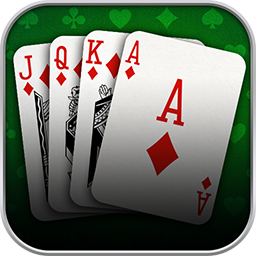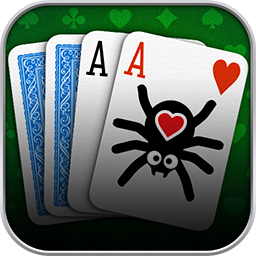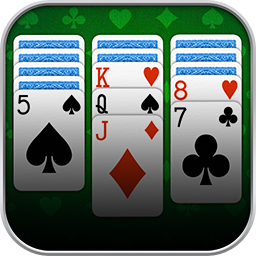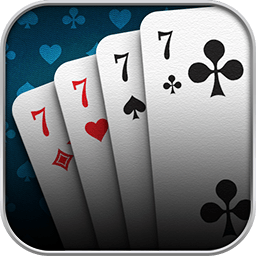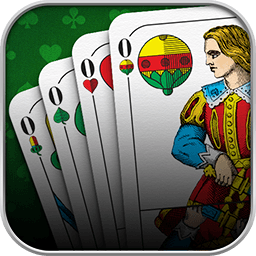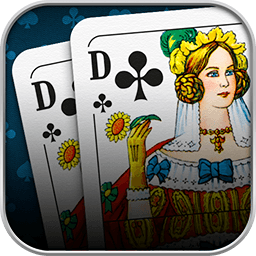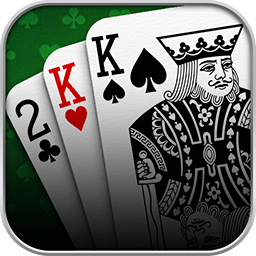Though Pinochle is a trick-taking game, melds – specific combinations of cards – play a role here. In this lesson, we take a close look at the way this element fits into the game and which melds there are in Pinochle.
As this lesson is a bit longer, you can jump to the individual topics here:
- What Purpose do Melds Serve in Pinochle?
- Influence on Bidding
- When Melding is Worthwhile
- When You Can Skip it
- Which Melds Apply in Pinochle?
- When are You Melding?
- How to Meld
You might have noticed that melding is only the fourth step of the game, according to our first Pinochle Lesson. We dedicate the second lesson to it anyway. You already need to keep it in mind and plan it during bidding – step no. 2 of the game: You need to assess which melds are available to you since melds yield potential points that you have to consider while bidding.
1. What Purpose do Melds Serve in Pinochle?
Melds are specific combinations of cards. Before presenting you with a detailed list of all melds, we clarify the Why of it: At the base, melds simply enrich your score.
To receive the points for the combinations in your hand, you need to meld them. That means showing your fellow players the cards you want to meld. After that, you put the cards back in your hand.
However, your meld points will only count at the end if at least one trick makes it to you or your team in that round.

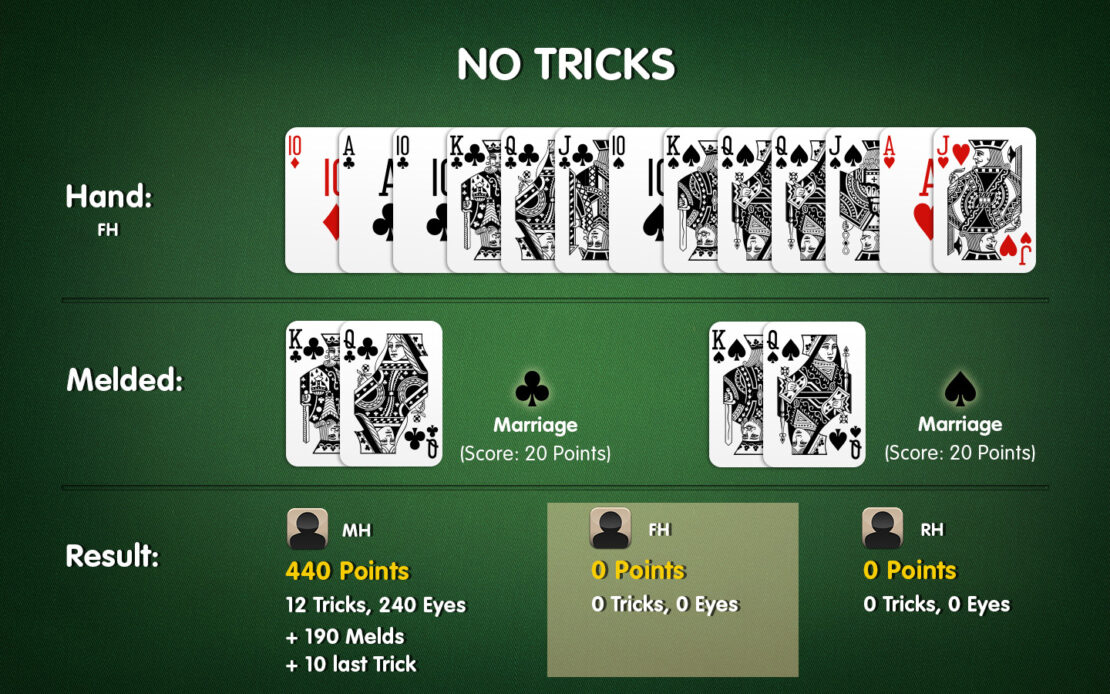
2. Consider Melding During Bidding
As long as your hand cards are not unbelievably bad, you should trust yourself to take at least one trick. That means you can include the points you would reach by melding while you are bidding. Depending on the melds in your hand, you might even be able to bid quite high. We will get to the exact scores of each meld further below in this lesson. And bidding is the topic of our next Pinochle Lesson.
Short and sweet: The player winning the bidding determines the game mode. That means determining the trump suit, which can raise the points for a few melds again. If you were in the position to determine the trump suit, you would choose the game mode with the greatest chance for success with your hand cards.
3. When Melding is Worthwhile
So, if you have powerful cards or many cards of one suit, it can be worth taking control of the game. The points for melds are your key to avoid overbidding. You also need to consider that you are disclosing part of your hand cards to your fellow players. It is up to you to do that or not. But cards you do not meld do not yield points.
4. When You Can Skip it
If the prospects of winning any tricks with your cards are meager, you can skip melding. Otherwise, your fellow players gain knowledge of your hand cards without you gaining any points.
That is why you should assess during bidding which melds you could bring to the table, even though melding follows only after bidding. And to do so, you need to know your way around melds.
5. Which Melds Apply in Pinochle?
Pinochle knows seven types of melds that are split into three groups. You can use the same card for multiple melds, as long as the melds belong to different groups. In American Pinochle, three more meld types enter the game. But here, we take a look at the melds featured in the basic games at the Pinochle Palace.
Group 1: Sets
Sets feature the same rank in multiple suits. Here is a little reminder: Traditionally, the ranks in descending order in Pinochle are Ace, Ten, King, Queen, and Jack. The suits are Clubs, Spades, Hearts, and Diamonds. If you select a German-suited deck at the Pinochle Palace, you will find the fitting explanations in the game help.
Four of a Kind
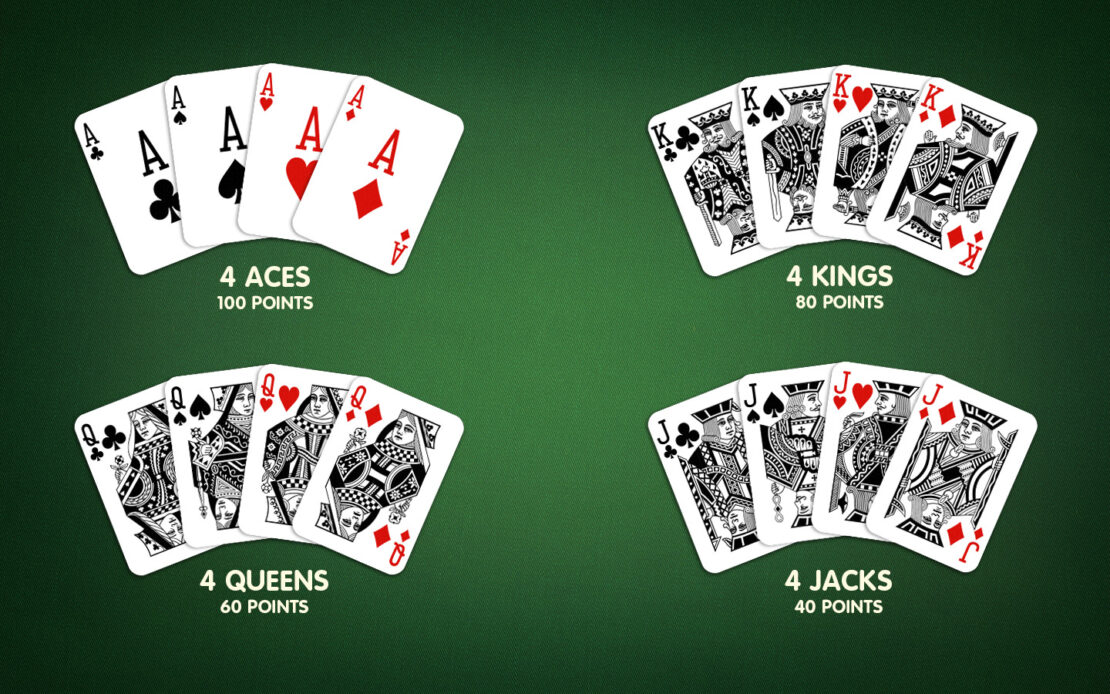
Four cards of the same rank in each suit must come together here. The Tens – and, if applicable, the Nines or Sevens – are exempt. The different ranks yield different scores from 40 to 100.
Eight of a Kind
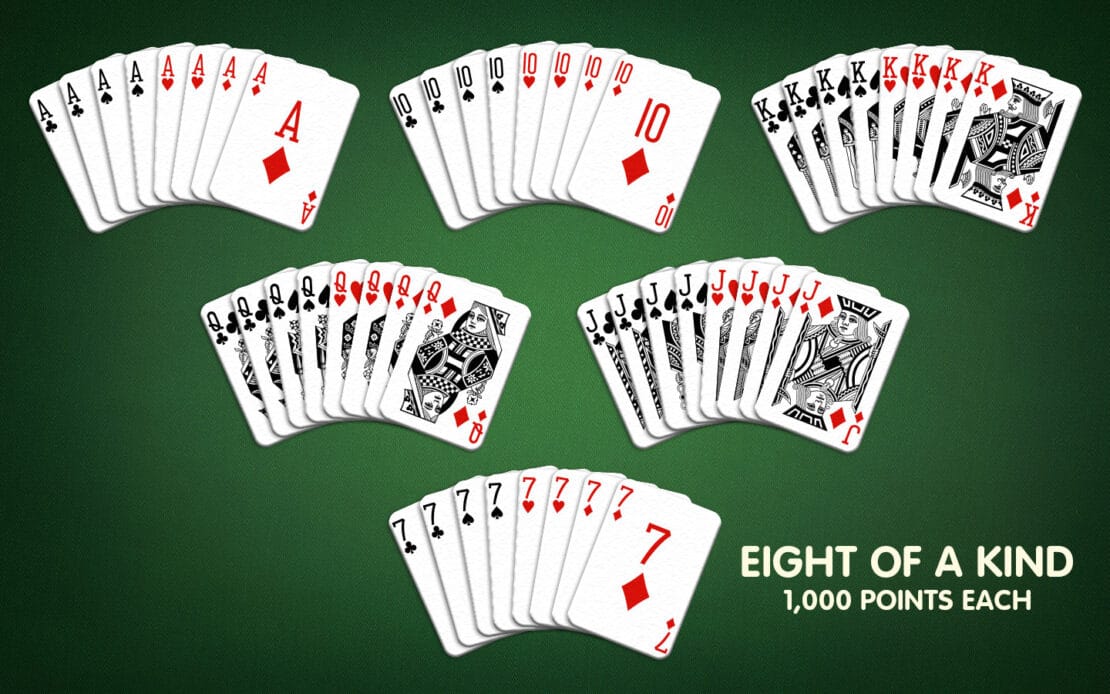
All cards of the same rank, so, two in each suit, must come together here. Eight of a Kind always score 1,000 points.
Group 2: Sequences
Sequences feature subsequent ranks of the same suit.
Marriage
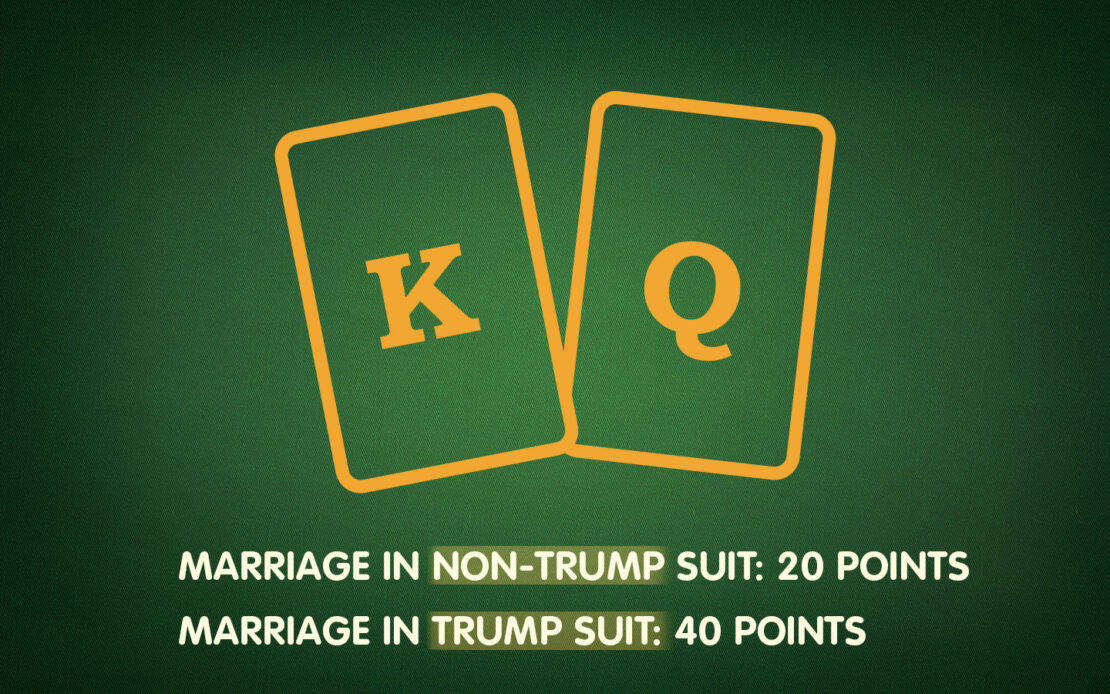
The Marriage consists of King and Queen of the same suit. It scores 20 points in any suit, but 40 points in the trump suit.
Run

The Run consists of five subsequent cards from Jack to Ace of the same suit. It scores 100 points in any suit, but 150 points in the trump suit.
Double Run
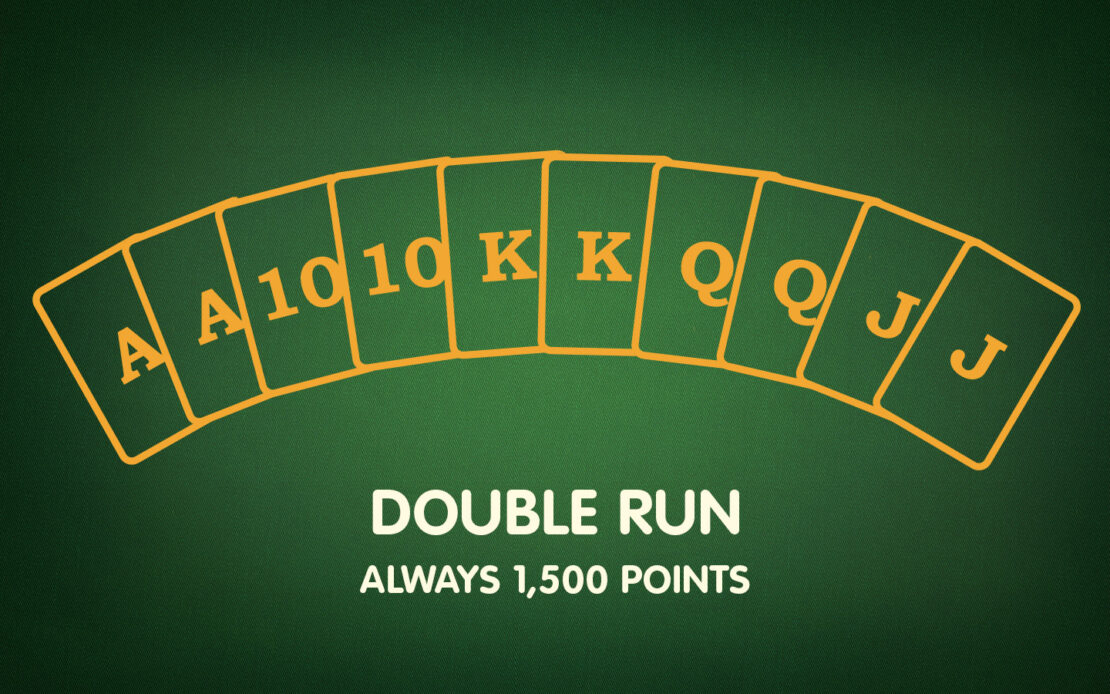
The Double Run consists of five subsequent cards from Jack to Ace of the same suit times two and always scores 1,500 points.
Group 3: Special Melds
These melds are neither sets nor sequences and, thus, they are something special.
Diss
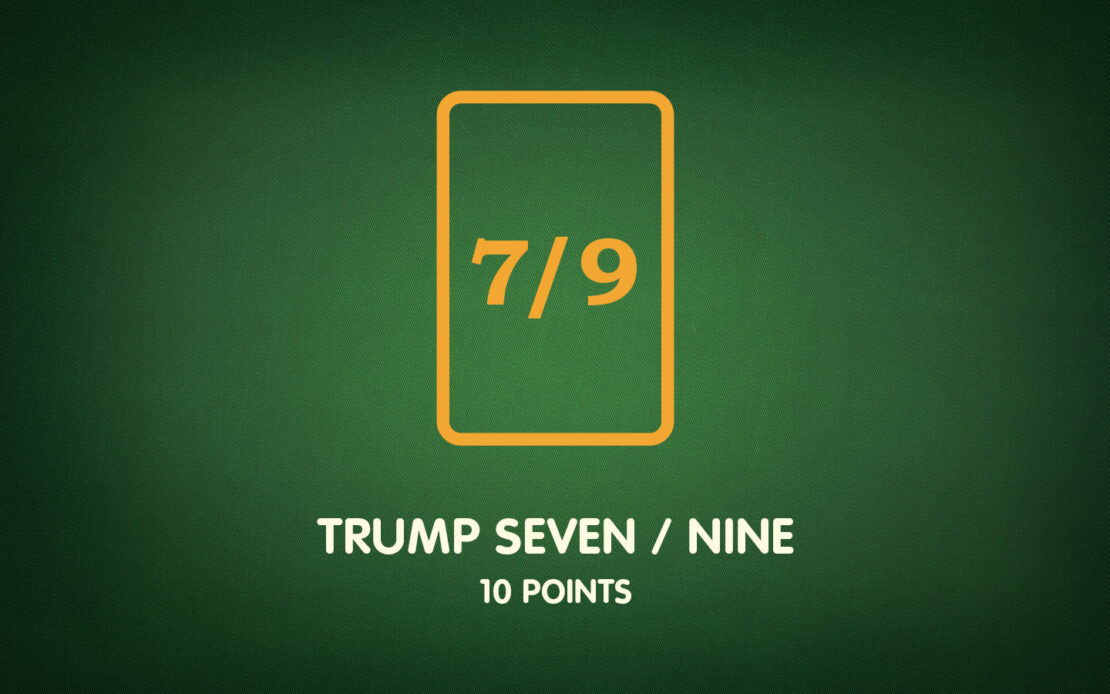
The Diss only appears when you are playing with a bigger deck. In some play groups, the Sevens are replaced with Nines. In both cases, you can meld the lowest trump card for ten points.
Pinochle
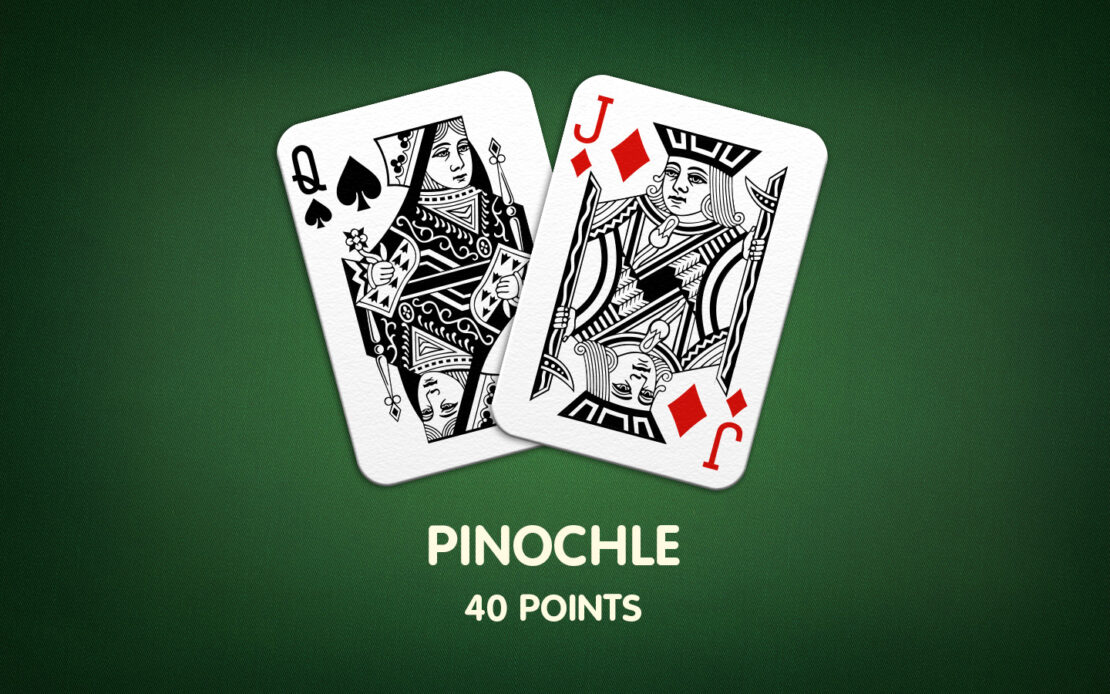
The Pinochle always features the Queen of Spades and Jack of Diamonds. This combination scores 40 points.
Double Pinochle
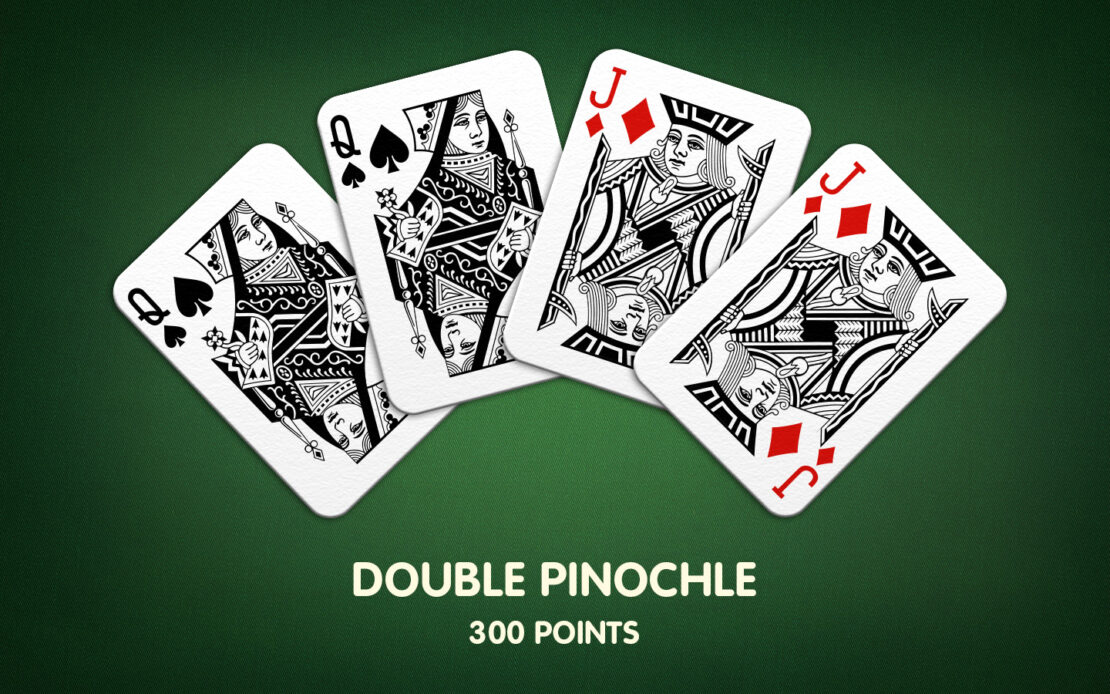
The Double Pinochle always features both Queens of Spades and both Jacks of Diamonds. This combination scores 300 points.
Melds in American Pinochle
Pinochle likely traveled from Europe to the USA with emigrants. There, it developed separately, as you can read in our Pinochle history. That is why German Pinochle – usually referred to as Binokel – and American Pinochle have multiple differences.
Among others, there are additional Melds in Group 2: Sequences. They only count in the trump suit and extend Runs with one additional Queen, King, or Marriage.
Our custom rule American covers these additional melds and other characteristics. We are already planning a lesson explaining all differences between the German and American Pinochle games.
6. When are You Melding?
As we discussed in the previous lesson, you are first of all dealing the cards to the players and the kitty. Bidding is next, and the player winning the bidding declares the game and picks up the kitty. Now, everybody knows exactly what their own hand cards are worth and how promising they are. Thus, melding can start now
Usually, melding is worthwhile unless you have a completely forlorn hand. After all, any meld deals additional points as long as you manage to gain one trick for yourself or your team, respectively.
Melding Instead of Overbidding
After winning the bidding and becoming declarer, you might even be pressed to meld in order to reach your bid value. You can gain at most 240 points by trick-taking and turn them into 250 points: The player taking the last trick gets ten bonus points, after all. To fulfill a bid value above 250, you will need points from melds. Otherwise, you are losing the game, getting penalty points equal to your double bid value.
If you realize that you cannot win the game, even with the meld points, you still have the chance to forfeit your hand. That will still yield negative points, but fewer than losing the game would. You have to announce forfeiting before declaring the trump suit, though.
After all players, starting with the declarer, melded counter-clockwise, the actual gameplay – the trick-taking begins.
7. How to Meld
At the game table at home or elsewhere, all players reveal the card combinations they each want to meld in front of themselves on the table.
The declarer begins, meaning the person that won the bidding. And then it goes around counter-clockwise. During melding, all melded cards remain on the table until all players melded. An appointed writer notes the meld points per player or team. After that, everybody picks their cards back up, and trick-taking ensues.

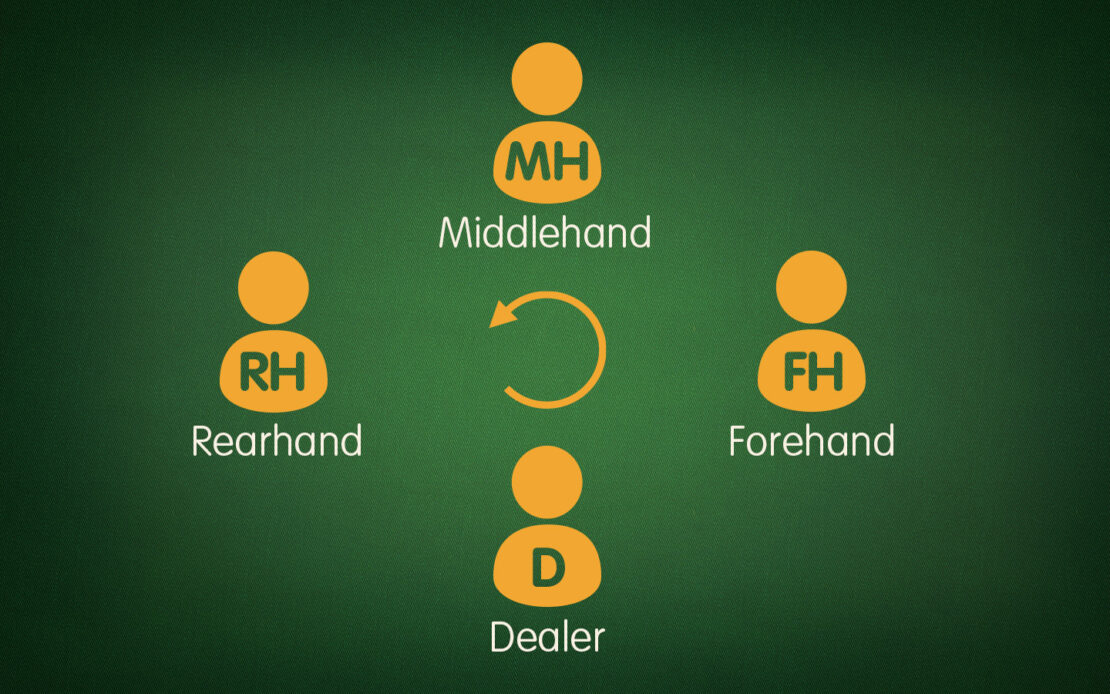
At our Pinochle Palace, the same process applies, but the melding is solved via displays.
Everybody sees their own hand cards, of course. During melding, you will all see a display of potential melds, one by one. This ensures nobody misses any opportunities or forgets to abide by the meld rules on accident. After a player’s selection, all fellow players see a display of the selected melds.

When it is your turn, you can choose if and which potential melds you want to meld. After all players selected their melds, trick-taking begins.

Congratulations! You made it to the end of this very thorough lesson! Now you can take on the next round of Pinochle well-informed. If you would like to learn more before doing so, you can take a look at our summarizing Pinochle manual or browse the list of lessons.


